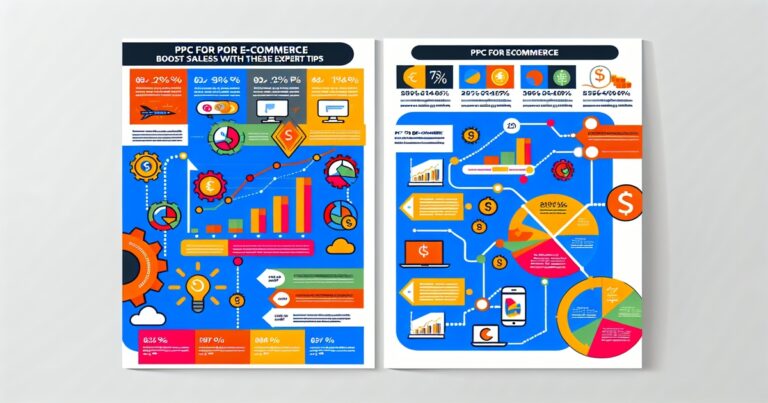What is Video Marketing, and Why Is It Important?
In today’s world, video marketing has become one of the most effective ways to connect with your audience. Simply put, video marketing uses videos to promote and market products or services.
With the rise of social media platforms like YouTube, Instagram, and Facebook, videos have become a go-to medium for brands looking to engage with their audiences. Regarding digital marketing strategies, video content has been proven repeatedly to be highly effective.
Not only does video content increase engagement rates, but it also helps boost brand awareness and credibility. According to recent studies, 85% of businesses already use video as a marketing tool.

Overview of What This Guide Will Cover
This guide aims to give you a comprehensive understanding of video marketing – from identifying your target audience and setting campaign goals to distributing your videos across various channels. We’ll cover everything you need to know about creating high-quality videos that resonate with your audience while bringing valuable results to your business. In section II, we’ll dive deeper into the benefits of incorporating video into your marketing strategy.
This will help solidify why it’s essential overall and how it can positively impact specific aspects of your business, such as conversion rates. Next, in section III, we’ll cover different types of videos you can create based on what they’re used for (such as product demos or behind-the-scenes footage).
Understanding which types best suit different parts of the buying cycle is critical in developing a successful campaign. After that, in section IV, we’ll go over best practices when creating a strategy by targeting appropriate distribution channels based on where potential customers might spend their time online.
We’ll also touch on choosing proper metrics so you can track success and make necessary optimizations. Section V will cover different recommendations on equipment, tips on scriptwriting, and editing.
This should give you an idea of how to create top-notch videos for your brand. Section VI is all about the distribution of your video content – specifically, which platforms are best suited for different types of content.
We’ll also cover email marketing campaigns as a distribution channel. Section VII’ll dive deep into measuring success in video marketing campaigns.
Here we’ll specifically focus on tracking metrics such as views, engagement rate, and conversion rate which can help you adjust your strategies as needed. Overall, this guide will provide a comprehensive understanding of video marketing for anyone looking to take advantage of the power of video in their digital marketing strategy.
Related: Enhancing Your Digital Marketing Strategy

Benefits of Video Marketing
Video marketing has become an essential tool in the modern world of digital marketing, and with good reason. This section will discuss some of the benefits video marketing can bring your business.
Increased Engagement and Retention Rates
One of the most significant benefits of video marketing is that it can increase engagement and retention rates. Videos have become famous for audiences because they are entertaining, informative, and easy to consume. A well-made video can keep your audience engaged for extended periods and reduce bounce rates on your website.
Moreover, videos have been proven to be more memorable than text or images, which helps to increase brand recognition and recall among viewers. By using videos in your marketing efforts, you’re creating a lasting impression on your target audience.
Boost Brand Awareness and Credibility
Another benefit of video marketing is that it helps businesses increase brand awareness and credibility. When you create high-quality videos that showcase your products or services, they create a positive image for your brand. Videos also provide an excellent platform for demonstrating expertise in a particular field or industry by sharing educational content or thought-provoking insights with the audience.
Furthermore, seeing real people talking about their experiences with products or services through testimonials or case studies in videos increases their trust in the brand. That’s why incorporating customer testimonials into your promotional videos is an effective way to build credibility.
Higher Conversion Rates
Using video as part of a broader digital strategy can significantly boost conversion rates compared to traditional methods such as text-based ads alone. The video provides visual stimulation that creates an emotional connection with viewers, who are likelier to purchase from you than those who haven’t seen any video content. Video can significantly increase conversion rates and drive more sales when used effectively throughout various customer journey stages (e.g., awareness, consideration, and decision-making).
Video Marketing Provides Long-Term Benefits
The benefits of video marketing aren’t limited to immediate results; they can provide long-term benefits for businesses. Videos are evergreen, meaning they don’t expire like a social media post or an online ad campaign.
A well-made video can continue generating traffic and leads over time, even months or years, since its initial release. This means you get the most out of your investment in creating videos because they have a longer lifespan than other forms of content.
Cost-Effective Marketing
Video marketing is a cost-effective way to reach your target audience. Compared to traditional types of advertising (e.g., billboards, TV commercials), video marketing is relatively inexpensive and provides immense value for the money spent. Creating quality videos doesn’t require expensive equipment or expert editing skills, with many affordable yet high-quality tools available today that can help create professional-looking videos.
Incorporating video marketing into your digital strategy has numerous benefits, such as increased engagement and retention rates, boosted brand awareness and credibility, and higher conversion rates for sales and traffic generation over time. These advantages are achievable without breaking the bank using today’s cost-effective tools.
Related: Comprehensive Guide to Top Digital Marketing Services for Business Success
Types of Videos to Create
Explainer Videos: The Perfect Introduction
Explainer videos are a great way to introduce your audience to your brand or product. They’re typically short, concise videos that explain what your product does and how it can benefit the viewer.
Explainer videos are excellent for showing off the features and benefits of your product while keeping the viewer engaged with visuals and narration. When creating an explainer video, remember that it should be simple, easy to understand, and visually appealing.
A standard format for explainer videos uses animation or motion graphics to illustrate concepts alongside voice-over narration. This type of video works well for software companies, startups, or any brand looking to communicate its value proposition.
Product Demos: Show Your Product in Action
Product demos are a great way to showcase how your product works in real life. These videos can be longer than explainer videos because they focus on demonstrating every aspect of your product’s functionality. They’re also an excellent opportunity to highlight unique features you want customers to know.
When creating a product demo video, it’s essential to keep it engaging by highlighting the most exciting aspects of using your product. Include customer testimonials throughout the video as social proof that others have already found success with your offering.
Testimonials/Reviews: Leverage Social Proof
Testimonial and review videos allow satisfied customers or industry experts to publicly share their positive experiences with your brand or products. These videos are highly effective because they provide social proof that helps build credibility and trust with prospective customers. When creating testimonial/review videos, try featuring happy customers who represent specific target audiences; this will help strengthen the authenticity of those testimonials even more so if their stories resonate well with viewers’ needs.
Behind-the-Scenes Footage: A Peek into Your Brand
Behind-the-scenes videos give viewers a glimpse into how a brand operates and the people behind it. These videos are informal, capturing candid moments and showcasing different aspects of the company’s culture. Behind-the-scenes content is an excellent way to humanize your brand and shows that there are real people behind the products or services you offer.
When creating behind-the-scenes footage, capture unique moments that show your company’s personality. This may include behind-the-scenes photos or video clips of team members working together on projects, fun moments at the office, or even brief interviews with staff members sharing their experiences or insights.
Creating a Video Marketing Strategy
Identifying Target Audience
Creating a video marketing strategy begins with identifying your audience. You need to know who your videos will be targeting to create content that speaks directly to them. Start by considering the demographics of your target audience.
Are they predominantly male or female? What age range do they fall into?
Do they have any specific interests or challenges that your product or service can help solve? After you’ve answered these questions, dive deeper into their psychographics- understanding their values, opinions, and beliefs.
This will help you craft content that resonates with them on a deeper level. Consider conducting surveys or focus groups to get insights directly from your target audience.
Setting Goals and KPIs
The next step in creating a video marketing strategy is setting goals and KPIs (Key Performance Indicators). Your goals should be specific, measurable, attainable, relevant and time-bound (SMART). What do you want to achieve with your video marketing campaign?
Do you want to increase brand awareness among a particular demographic? Boost sales of a particular product?
Once you’ve set your goals, determine the KPIs that will help track progress toward achieving those goals. This could include metrics such as views, engagement rates, click-through rates or conversions.
Choosing Platforms for Distribution
After identifying your target audience and setting goals/KPIs for your video marketing campaign, it’s time to choose which platforms you’ll use to distribute your videos. It’s important to consider where your target audience spends online- do they primarily use Facebook?
YouTube? Instagram?
Different platforms have different rules for uploading videos- make sure you understand platform-specific requirements such as aspect ratios and video length limits before creating content. In addition to social media platforms like Facebook and Instagram, don’t forget about other distribution channels such as email marketing campaigns and your website.
You can increase engagement and dwell time by embedding videos on your website while improving your SEO. Ultimately, the key to choosing the right platforms for video marketing distribution is understanding where your audience spends their time online and meeting them there.
Conclusion: Creating a Strong Video Marketing Strategy
Creating a solid video marketing strategy involves identifying your target audience, setting goals/KPIs, and choosing the right platforms for distribution. By starting with your target audience in mind, you’ll be able to craft content that speaks directly to them and achieves your business objectives.
Remember to set specific goals that are measurable over time so you can track progress toward success. Selecting the right platforms for distribution will ensure that you reach your audience where they are most active online.
Tips for Creating High-Quality Videos
Equipment Recommendations
Having the right equipment can make a huge difference when creating high-quality videos. While you don’t need to break the bank, investing in essential equipment can help take your videos to the next level. Here are some equipment recommendations:
– Camera: A DSLR or mirrorless camera is an excellent investment to create professional-looking videos. These cameras allow you to manually adjust settings like aperture and shutter speed, giving you more control over your footage.
– Microphone: Good audio is just as important as good video quality. A Lavalier or shotgun mic can help capture clear sound and eliminate background noise.
– Tripod: Keeping your camera steady is crucial for creating smooth footage. A tripod or monopod can help stabilize your shots and keep them looking professional.
– Lighting: Lighting can make or break your videos. Investing in essential lighting gear like softboxes or LED panels can help illuminate your subject and create a more polished look.
Scriptwriting Tips
Creating a compelling script is essential for keeping viewers engaged and delivering your message effectively. Here are some scriptwriting tips:
– Identify your target audience: Before writing your script, consider who you’re trying to reach and what message you want to convey. – Keep it concise: Attention spans are short these days, so it’s essential to keep your script concise and focused on the key points.
– Use storytelling techniques: Storytelling is a powerful way to engage viewers emotionally and keep them invested in your content. Use anecdotes or examples that illustrate the points you’re making.
– Incorporate humour (when appropriate): Humor can effectively connect with viewers and inject personality into your videos. Just be sure not to force it if it doesn’t fit with the tone of your content.
Editing Best Practices
Editing is where the magic happens. It’s where you turn raw footage into a polished final product.
Here are some editing best practices to remember: – Create a rough cut: Start by organizing your footage and creating a rough cut.
This will help you get a feel for the pacing and flow of your video. – Trim unnecessary footage: Cut out any footage that isn’t essential to the story or message you’re trying to convey.
– Use transitions wisely: Transitions can help smooth cuts between clips, but too many can be distracting. Stick with simple cuts or fades unless there’s a specific reason to use something more elaborate.
– Add music and sound effects: Music and sound effects can enhance the emotional impact of your videos. Just make sure they complement the footage rather than overpowering it.
– Color corrects your footage: Adjusting the colours in post-production can help give your videos a professional look. Experiment with saturation, contrast, and brightness until you find the right balance.
With these tips for creating high-quality videos, you’ll be well on your way to engaging content that resonates with viewers. Next, we’ll discuss distributing your videos across platforms for maximum reach and impact.
Distribution Channels for Video Marketing Once you’ve created your high-quality videos, it’s time to distribute them in the best way possible. You can use various channels to get your videos in front of your target audience, including YouTube, social media platforms like Facebook, Instagram, and Twitter, as well as email marketing campaigns.
YouTube
Since its launch in 2005, YouTube has become the world’s second-largest search engine after Google. With over 2 billion monthly active users and over a billion hours of video being watched daily on the platform, it’s no surprise that YouTube is a popular distribution channel for video marketers. To ensure that your videos reach their intended audience on YouTube, optimize them for search engine rankings by using relevant keywords in titles and descriptions.
Also, create custom thumbnails that accurately represent your video content and encourage viewers to click.
Pro Tip: Use YouTube analytics to track metrics like views and engagement rates so you can adjust future content accordingly.
Social Media Platforms (Facebook, Instagram, Twitter)
Social media platforms are great distribution channels for video marketing because they allow you to target specific demographics based on interests or behaviours. Facebook is beneficial since it has over 2 billion active users worldwide.
Instagram is also famous for video marketing due to its visual nature – short-form videos do particularly well here. When sharing videos on social media platforms like Facebook or Twitter, keep them short and sweet – ideally less than one minute long.
This ensures viewers don’t lose interest or get distracted before watching the whole thing.
Pro Tip: Utilize hashtags when sharing videos on platforms like Instagram or Twitter so that they are more discoverable by people who may not already be following you.
Email Marketing Campaigns
Email marketing is another effective distribution channel for video marketing since it allows you to target people who have already shown interest in your brand or product. As such, email campaigns can be more personalized and more effective at driving conversions than other channels. When including videos in email marketing campaigns, ensure they are mobile-responsive, as many people now check their emails on their smartphones.
Include a clear call-to-action (CTA) in your email to encourage viewers to take the next step.
Pro Tip: Use A/B testing to experiment with different subject lines, CTAs, and video content to determine what works best for your audience. Knowing which distribution channels to use is critical for successful video marketing. By effectively leveraging YouTube, social media platforms like Facebook and Instagram, and email marketing campaigns, you can reach a wider audience and maximize the impact of your video content.
Measuring Success in Video Marketing
Now that you have created your video and chosen the distribution channels, it is time to see how well it performed. The best way to measure the success of your video marketing campaign is by tracking different metrics and analyzing data. This can help you identify what worked well and what needs improvement for future campaigns.
Tracking Metrics such as Views, Engagement, and Conversions
The first metric we’ll look at is views. This metric measures how many times your video has been viewed.
Remember that not all views are created equal – some people may only watch a few seconds of your video before moving on, while others may watch the entire thing multiple times. The next metric to track is engagement.
This includes likes, comments, shares, and other actions viewers took indicating interest in your content. Engagement strongly indicates how well your video resonated with your audience.
Conversions are the ultimate goal of any video marketing campaign. A conversion might be signing up for a newsletter or purchasing on your website after watching your video.
Analyzing Data to Optimize Future Campaigns
Once you have collected data on these metrics, it’s time to analyze them to identify areas for improvement in future campaigns. For example:
- If you notice that many viewers drop off after the first few seconds of your video (high bounce rate), this could indicate that you need to improve the introduction or make the content more engaging from the start.
- If the engagement was low, but views were high, this might indicate that people watched out of curiosity but were not necessarily interested enough to take further action.
- If conversions were low despite high engagement and views, there might be issues with your call-to-action or landing page that must be addressed.
Analyzing data from your video marketing campaigns can help you fine-tune your strategy for maximum impact. By focusing on the metrics that matter most and experimenting with different approaches, you can create more effective videos that drive results for your business.
The Dangers of Prioritizing Production Value Over Content Quality
One of the most common mistakes businesses make when creating video content is putting too much emphasis on the production value rather than the quality of the content itself. While professional lighting, sound, and camera equipment can undoubtedly enhance a video’s overall look and feel, they won’t make up for a lacklustre script or poor storytelling. Investing too heavily in production value can harm your video marketing efforts if it means sacrificing substance and creativity.
One way to avoid this trap is by prioritizing a solid concept and message before worrying about equipment or technical skills. Start with brainstorming sessions focusing on what you want to convey through your videos.
Consider what problems you’re solving for your audience or what benefits they will receive from watching your content. Once you have a solid idea, you can then take steps to execute it with high-quality visuals and audio.
Another potential downfall of focusing solely on production value is that it often leads to a lack of authenticity in your videos. Viewers are looking for authentic, relatable stories that resonate with them emotionally and intellectually.
If all they see are polished, over-produced videos that feel like commercials rather than authentic experiences, they’ll quickly lose interest in your brand. Neglecting to optimize videos for SEO
Related: Engaging Your Audience: Content Marketing Techniques That Work
Don’t Be Guilty Of Neglecting To Optimize Videos For SEO
Creating great video content is only half the battle for successful video marketing. If no one can find your videos online or on social media sites, then all that hard work will go unnoticed.
That’s why optimizing your videos for search engines like Google should be integral to any video marketing strategy. SEO for video involves using relevant keywords in titles, descriptions, tags, and transcripts so that search engines can understand what your video is about.
Additionally, optimizing video content for SEO means ensuring it loads quickly and can be viewed on different devices and platforms, including mobile. To optimize videos for SEO, start by conducting keyword research to find terms and phrases that are relevant to your content.
Use those keywords in the video’s title, description, and tags. Make sure the transcript of your video includes these keywords as well.
Also, consider adding a transcript of your video directly onto the page where it’s hosted to provide more detailed information about the video’s content. Ignoring the importance of mobile optimization
Related: How to Measure the Effectiveness of Your SEO Strategies
Why Ignoring The Importance Of Mobile Optimization Can Be Costly
We live in a mobile-first world, which means more people are watching videos on smartphones and tablets than ever before. If you’re not optimizing your videos for mobile devices, you’re likely missing out on a significant portion of potential viewership.
Mobile optimization involves several factors, including load time and design elements that work well on a small screen, such as clear thumbnails or text overlays instead of tiny subtitles that are hard to read. Consider using vertical or square formats rather than horizontal since most smartphones display better in portrait mode.
When creating videos for mobile devices, keep them short but engaging with clear call-to-actions (CTAs) at the end, such as asking viewers to leave comments or share their thoughts on social media platforms like Facebook or Twitter. Use analytics tools like Google Analytics or YouTube Insights to track how many people watch your videos on mobile devices versus desktops so you can adjust accordingly.
Prioritizing production value over content quality is one common mistake businesses frequently make with video marketing efforts. Neglecting to optimize videos for SEO is another major pitfall hindering your ability to reach new audiences online.
Ignoring the importance of mobile optimization will cause companies to miss out on valuable opportunities for increased engagement and conversions. By avoiding these three common mistakes, you can create compelling video content that resonates with your target audience and leads to long-term success.
Related: Mobile-First Web Design: Building Responsive Websites
Conclusion
After reading this ultimate guide to video marketing, you should feel equipped with the knowledge and tools to create compelling videos that engage your audience and drive results. Here’s a recap of the key takeaways:
Recap of Key Takeaways
The Benefits of Video Marketing
Video marketing can increase engagement and retention rates, boost brand awareness and credibility, and lead to higher conversion rates. By incorporating video into your marketing strategy, you can effectively communicate your message and leave a lasting impact on your audience.
Types of Videos to Create
There are numerous types of videos you can create, including explainer videos that break down complex concepts in an easily digestible manner, product demos that showcase the features and benefits of your offerings, testimonials or reviews from satisfied customers that inspire trust in potential buyers, and behind-the-scenes footage that humanizes your brand.
Creating a Video Marketing Strategy
To create an effective video marketing strategy, it’s essential to identify your target audience and set clear campaign goals and KPIs. Choosing the right platforms for distribution is also crucial in ensuring maximum visibility for your videos.
Tips for Creating High-Quality Videos
Investing in proper equipment, such as cameras and lighting, is essential to produce high-quality videos that resonate with viewers. Scriptwriting tips can also help ensure that your content is engaging from start to finish. And editing best practices can help bring everything together into a polished final product.
Distribution Channels for Video Marketing
Many channels are available for distributing video content – YouTube is often considered the go-to platform but social media platforms like Facebook, Instagram, and Twitter offer great reach. You may also want to consider email marketing campaigns, which provide targeted communication with leads or customers.
Measuring Success in Video Marketing
Tracking metrics such as views, engagement, and conversions are critical in determining the success of your video marketing campaigns. Analyzing data can help you optimize future campaigns and make informed decisions about resource allocation.
Encouragement to Start Implementing Video Marketing Strategies
Now that you know the benefits, types of videos to create, how to create a strategy, tips for high-quality videos, channels for distribution and measuring your success – it’s time to start implementing video marketing strategies. Don’t be intimidated by the prospect of creating video content. The right approach and preparation can be an incredibly effective tools for engaging your audience and achieving your business goals. So go forth and start creating!









